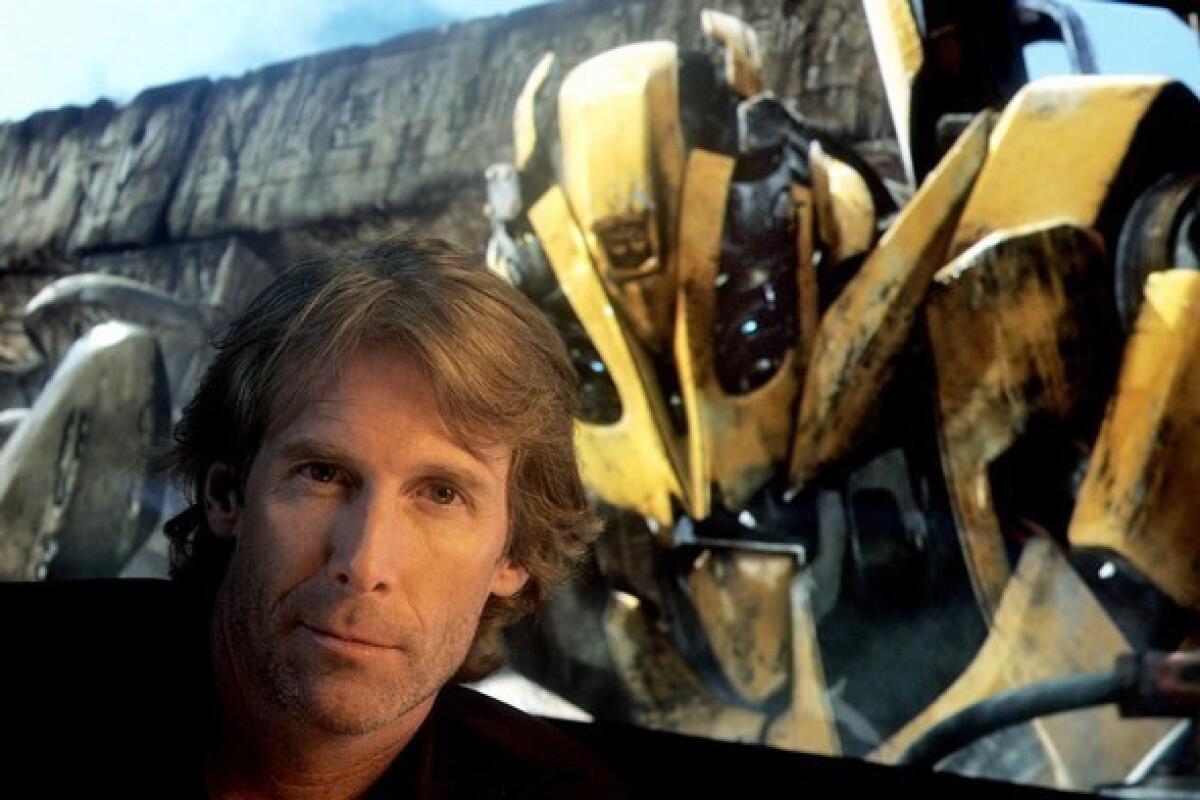‘Pain & Gain’: Why is it so hard for directors to shed their skin?

- Share via
If you follow directors’ careers, you’ve often heard how hard it is for a so-called small filmmaker to go big. A few, like Christopher Nolan, have done it, evolving from intimate indies to studio tent poles. But it’s a trick infrequently attempted and even less frequently pulled off.
On the other hand, there’s less talk about moving the other way: big helmers going small. In theory, good direction is about a set of immutable, fundamental skills: managing actors, framing a vision, negotiating with whoever’s signing the checks. Those should apply whether you have 12 people in your crew or 1,200, and if the check-signer is a star-loving entrepreneur or an Armani-clad corporate mogul.
In reality, of course, it doesn’t. Directors have a hard time switching out of their comfort zone, particularly when it comes to budget and scale. And as hard as it is to ramp up, it can be even harder to ramp down.
REVIEW: Bay’s ‘Pain & Gain’ is bargain-budget; still excessive
Sure, a Steven Spielberg can move fluidly between “Jurassic Park” and “Lincoln.” But he’s the exception. Consider a few other examples (there are plenty more). Paul Weitz has made hugely bankable hits when he’s turned his eye to broad comedy, like with “Little Fockers.” But he’s struggled with ratcheted-down human tales such as “Being Flynn.”
Alex Kurtzman can pen the heck out of a “Star Trek” blockbuster, but when he gets behind the camera for a low-key drama such as “People Like Us,” he’s stomped like an ill-fated Decepticon.
And George Lucas, well, that one sort of speaks for itself.
(Perhaps an interesting counter-example to all this is James Cameron, who has stayed within a certain big-budget filmmaking range, and in so doing has become one of the most successful directors of all time.)
The latest shape-shift attempt came this weekend with the release of Michael Bay’s “Pain & Gain.” When it comes to Bay, small is relative. The idea of knuckle-cracking bodybuilders dressing up as ninjas to scheme up some cash isn’t exactly the log line for “Silver Linings Playbook.” And “Pain & Gain,” starring Dwayne Johnson and Mark Wahlberg, still has enough action to scare an earthquake.
PHOTOS: Celebrities by The Times
But Bay’s latest is nonetheless a movie set in the real world (well, Miami) and lacks any trace of alien robots. It is a modestly budgeted film and has enough moments of gallows humor and character comedy to have earned it some comparisons (though not always favorable) to a Coen Bros. film. It’s far from “Transformers.”
In fact, when it comes to scope and spectacle, “Pain & Gain” is arguably Bay’s smallest film in nearly 20 years, since the first “Bad Boys.” And it comes after three of the loudest movies ever to grace the screen in his last three Autobot flicks.
And how did Bay fare with all this? Not stupendously. As my colleague Amy Kaufman writes, “Pain & Gain” managed just $20 million at the box office this past weekend. That’s not awful news for studio Paramount given the relatively low production budget ($26 million). But it’s a pittance by Bay standards.
To put it in context with other going-small experiments, consider Chris Columbus, who after helming two “Harry Potter” movies in the early 2000s decided to switch it up by directing “Rent” in 2005. The film opened to about 10% of the “Potter” openings.
PHOTOS: Hollywood backlot moments
“Pain & Gain” didn’t perform that weakly — it was about 20% of the “Transformers” debuts. But it’s in the ballpark.
We film journalists can like to have it both ways. A director who stays in his comfort zone is seen as risk-averse, a system-loving creature of habit. Yet when he or she branches out, we ask why on Earth they thought this could work.
And it’s true, we’re not necessarily a consistent or easily satisfied bunch. But there’s some merit to the message too: Maybe, before a director takes the plunge on something radically different, it’s worth asking some tough questions. Because the old thing was working just fine. And the new thing can be a lot harder than it looks.
ALSO:
‘Pain & Gain’ and the mythos of Michael Bay
‘Pain & Gain,’ is all brawn, no brains, reviewers say
Follow me on Twitter at https://twitter.com/ZeitchikLAT
PHOTOS AND MORE
Roger Ebert: Career in pictures
ENVELOPE: The latest awards buzz
PHOTOS: Greatest box office flops
More to Read
Only good movies
Get the Indie Focus newsletter, Mark Olsen's weekly guide to the world of cinema.
You may occasionally receive promotional content from the Los Angeles Times.







